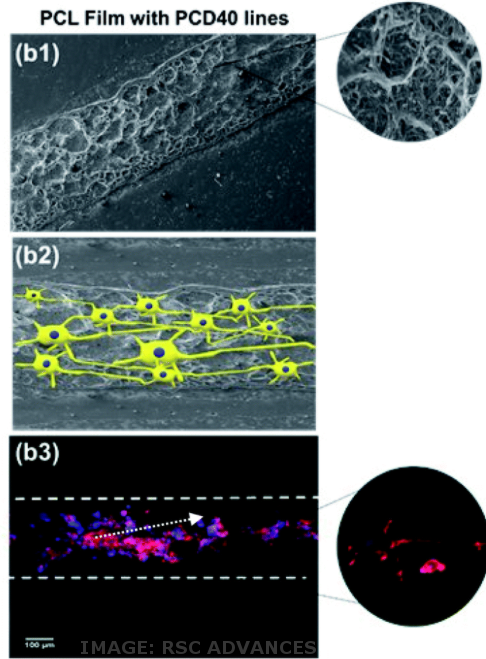New ink guides nerve growth
 Researchers have developed a neuron-growing ink that uses the body’s own electrical signals to precisely guide the growth of nerve cells.
Researchers have developed a neuron-growing ink that uses the body’s own electrical signals to precisely guide the growth of nerve cells.
The bioconductive ink developed at RMIT can be printed in lines to direct where neurons grow, a big breakthrough in the emerging field of nerve engineering.
RMIT University’s Dr Shadi Houshyar says concentrating the growth of nerve cells in precisely ordered lines is essential to be able to reconnect nerves and heal traumatic nerve injuries.
“Nerve cells need to be meticulously guided to regrow between the broken ends of a nerve – if they just build up anywhere they will cause more pain or sensory problems,” Dr Houshyar said.
“With our bioconductive ink, we can concentrate the neuron growth where we need it.
“Our research is in early stages but with further development, we hope one day to enable damaged nerves to be fully reconnected, to improve the lives of millions of people worldwide.”
Currently, there are limited options for rebuilding function when an injury results in large peripheral nerve gaps.
Nerve grafts, where surgeons harvest nerves from elsewhere in the body to bridge across a gap, can lead to complications including painful neuromas, misalignment of neural cell growth and injury at the harvest site.
Although emerging alternative techniques such as artificial nerve guides exist, they often fail to achieve full functional or sensory recovery because they do not properly replicate nerve tissue.
The new nerve-regenerating ink combines the neurotransmitter dopamine – known to help nerve cell survival – with a conductive carbon nanofibre and polymer.
The nanofibre and polymer enables the controlled release of dopamine from the ink, supporting the survival of developing neurons for longer.
Because it is conductive, the nanofibre can also harness the power of bioelectricity – the electrical signals generated by the nervous system that play a key role in maintaining biological function and can accelerate wound healing.
“Using conductive materials allows free movement of electrons, stimulates cell growth and helps connect injured neural tissue,” said Dr Houshyar.
As part of the research, the team also developed a biocompatible scaffold, so the ink could be printed in lines and tested with human cells.
The study found the printed lines supported neural cell attachment and migration – both important for nerve regeneration.
Cell differentiation was also boosted, with the neural cells becoming more specialised as they grew along the lines.








 Print
Print